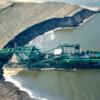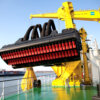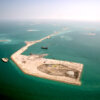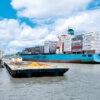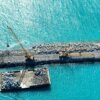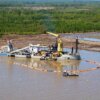Borrow area selection affects the feasibility of a project as it defines the amount of available, suitable fill at a reasonable distance from the site.
Importance of the borrow area
In order to proceed with a dredging project, the presence of sufficient suitable fill is a necessity. To select a borrow area for a reclamation project or beach replenishment, the following should be considered:
- the haulage distance from the borrow area to the project location;
- the quantities of fill available; and
- the quality of the fill including fill mass behaviour, in-situ characteristics.
Data collection and soil investigations
Data collection and soil investigations are required to evaluate if the quality is suitable and the quantities are available.
In some case, a borrow area for a reclamation project may be able to be retrieved from a nearby capital or maintenance dredging project where a harbour is being deepened.
Boundary conditions
In addition to the quality and quantity of suitable fill, certain so-called boundary conditions must be considered. These include:
- what is the exposure of the borrow are to waves, swell and wind that could hamper dredging activities;
- if the distance between the borrow area and reclamation site is too long it could affect the economics of the works;
- the presence of large volumes of unsuitable overburden may require removal prior to dredging the suitable materials;
- the bathymetry at and near the borrow area may have an impact on the type of equipment being used;
- governmental regulations need to be considered when selecting the borrow area;
- if royalty payments for the borrow area are high, an alternative might be needed;
- existing infrastructure like pipelines, cables, or other obstacles may need to be avoided or removed.
Special investigations and surveys will be needed to evaluate the above mention boundary conditions could have adverse effects on the feasibility of the borrow site.


